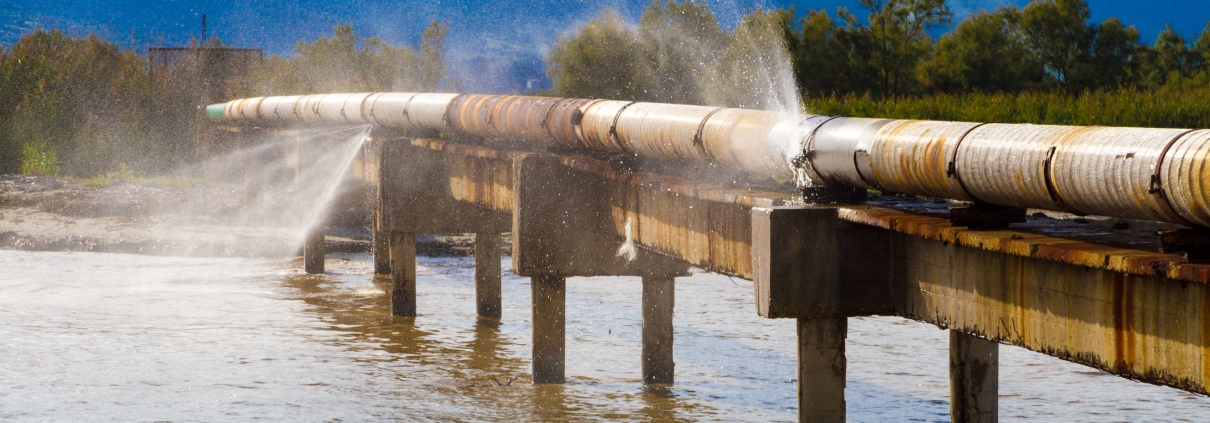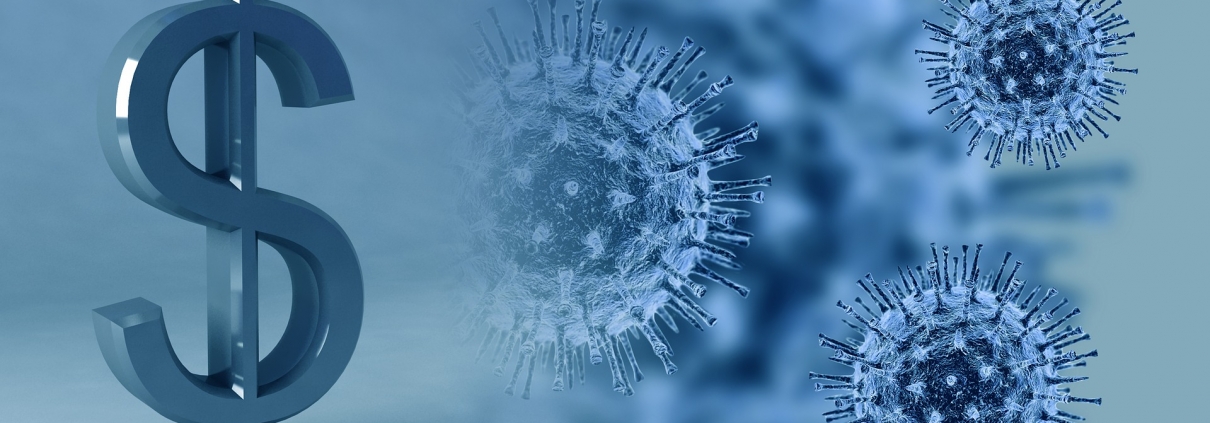Clive Harrison is an old friend and a water sector professional with a fine gasp of modelling that get to the essence of complex problems even when the data is poor. While stuck in Poland because of travel restrictions due to COVID-19, he turned to modeling to understand the pandemic. The result was an easy-to-use Excel model where anyone can enter their own assumptions about key variables such as social distancing and doubling time of the virus, and see how changes in those variables change the rate of infection and death in various countries. Clive has agreed to share this model which might be helpful for people trying to understand the basic dynamics of the epidemic. Clive has also shared his thoughts about modeling in situations like this. Please feel free to download the model at the end of this post, and do let us know if you make improvements to the model.
David Ehrhardt, Chief Executive, Castalia
Clive Harrison is the guest author of the blog post below.
In the absence of of any hard data I turned to modelling to try to figure out what’s really happening with the pandemic. It’s very simple, deterministic stuff but it seems to work quite well. It’s fun but a bit scary to play with the assumptions (highlighted in yellow in the model). I pulled in the latest stats on reported deaths in each country and calibrated my models for Canada (almost exactly the same population as Poland), Sweden (it looks as they are within a few days peaking out, without any formal social distancing), the USA (don’t look, it’s awful) and the UK (ditto). India would be interesting to look at but I don’t have the stomach for that yet.
I noticed the little piece in the Economist a week or so ago, on a pre-peer-review paper by Silverman and Washburne on “using ILI surveillance to estimate state-specific case detection rates” to estimate the unreported COVID-19 cases and then project their growth. ILI stands for Influenza-Like Illness, and the Obama administration set up a system where panels of GPs in each State report the weekly numbers of patients consulting them with flu-like symptoms but who test negative for flu. Apparently there is a very unusual spike in these reports that coincides and correlates with the early Covid-19 case reports but is many times larger (i’m attaching it in case you didn’t see it). The implication is that the number of infectious cases is much larger than current estimates and thus that the death rate is commensurately lower and the spread much quicker.
There’s also a recent study based on surveys in Heinsburg, Germany, that reportedly estimates the death rate there at just under 0.5%, so I took that as my upper bound and then modeled for death rates of 0.1% and 0.5% to see what difference they make. If confirmed then it means that the epidemic will peak and fade more quickly than present estimates suggest and that there would be mercifully fewer deaths. Sweden will show the way in the next few days probably, as their case and death rates are spiking and could peak and start to fall in the next week or two.
The model assumptions are very simple: the basic infection rate is defined as the time for cases to double, nobody gets infected a second time, the proportion of susceptible individuals shrinks as the proportion of people who are or were infected increases, and social distancing slows the rate of growth by increasing the doubling time. I calibrated the models by adjusting the date of the first infection, the doubling time, the multiplier for the impact of social distancing and the number of days after the start of the epidemic before social distancing was introduced (but I didn’t check whether this matched the actual date). The third chart to the right of the table shows the actual reported deaths as blue dots and the model values as lines, orange with social distancing and blue without. The main formulae are in cells C14 and K14 and then just copied down.
If the epidemic is going to be over more quickly than the press would have us believe, then there will be many interesting consequences that I am only beginning to think about.
Photo by Fernando Zhiminaicela
Share this entry
Castalia’s Chef Executive, David Ehrhardt, delivered a webinar on the role of privately-financed performance-based contracts(PBC) for non-revenue water (NRW) reduction in response to COVID-19, both from the perspective of improving public health and restarting the economy. This webinar was hosted by the International Water Association’s Water Loss Specialist Group.
Download
Or watch the recorded webinar below.
Share this entry
In the absence of a cure or vaccine for COVID-19, governments and institutions such as the World Health Organization have turned to globally-endorsed COVID-19 prevention guidelines, primarily, regular hand-washing and other hygiene practices, to slow the spread of the virus. Provision of safe and uninterrupted water services, so no one is left behind, is a key objective of governments and utilities at this time.
Many water utilities use ‘disconnection for non-payment’
as a key tool to ensure collections on bill payments. However, collections will
be increasingly difficult for many utilities as their customers lose their
livelihoods because of the pandemic. Additionally, Governments are issuing
freezes and soft payment schedules on utility payments to reduce the financial
strain of people affected by the pandemic. Governments and utilities are faced
with the crucial task of balancing reliable service provision when it’s getting
harder to recover their operating expenses and the return on investments.
Castalia is tracking progress and response to this challenge in some countries/states we work in. The table below summarizes the response in each selected country:
Table 1. Response on Tariffs, Disconnections and Bill Payment

We believe that Governments need to take urgent measures to define financial support mechanisms for water service providers. So far, in the developed countries we have looked into, governments have done little to require forbearance from the utilities, or to support them financially, with a few exceptions. In USA, the Payroll Protection Program loans provide small and medium enterprises with 100% government guaranteed loans to cover not just payroll and rent, but also estimated utility bills. In New South Wales, the Government announced grants up to $10,000 for small businesses struggling to meet utility costs. Both regions, have taken measures to reschedule utilities bills payment for customers. In Washington D.C., the water utility has restored water service for disconnected residents. However, neither New Zealand nor Australia has taken measures for reconnections.
Colombia was quick in its response to protect consumers
with a rational and comprehensive plan. However, the Government has not
provided a complementary mechanism to support utilities financially. The Government’s
National Decree allows for reconnections (more than 200,000 households have
been reconnected), stops tariff increases during the State of Emergency, and allows
local governments to use alternate means of supply to provide water services when
necessary. The National Decree did not specify any mechanisms to support
utilities. In the past few days, the National Regulator clarified that water
services cannot be free of charge. The regulator insisted that cost recovery
and tariff payments should be guaranteed to utilities, and suggested mayors to
subsidize water services to relieve low-income households from water costs, as defined
in the current laws.
Other developing countries have not yet enacted measures
on tariffs, disconnections and bill payments. In Vietnam, the Government has
not announced any measures to support utilities or customers in this pandemic.
Utilities are running business as usual and customers are expected to pay the
bills on time, despite the financial strain of the pandemic. The South African Government
has taken some measures to ensure water supply to communities through communal
water storage with water collection points and interim containerized sanitation
systems. However, the Government hasn’t made public announcements about
supporting utilities during these times. In Mozambique, the agency in charge of
small-town water supply just asked for an emergency fund for small private
operators in some towns, worried that the operators are likely run out of money
and stop providing water services.
While it remains important to specify the legal
accommodations utilities must offer their customers during this period, we
believe that governments will benefit from providing mechanisms to ensure that
utilities remain financially viable during a period of low cash receipts due to
the pandemic.
As the pandemic extends and continues affecting the global
economy, we foresee governments taking measures to finance cashflow shortages
of utilities. Access to international funds could be a viable option to finance
water utilities. Although these can be considered risky loans, they can be
secured against revenue escrows and government guarantees.
We are keen to track updates and changes in policies in countries we work in and hope to share new developments on this blog.
Author: David Hernandez



 Image by
Image by 